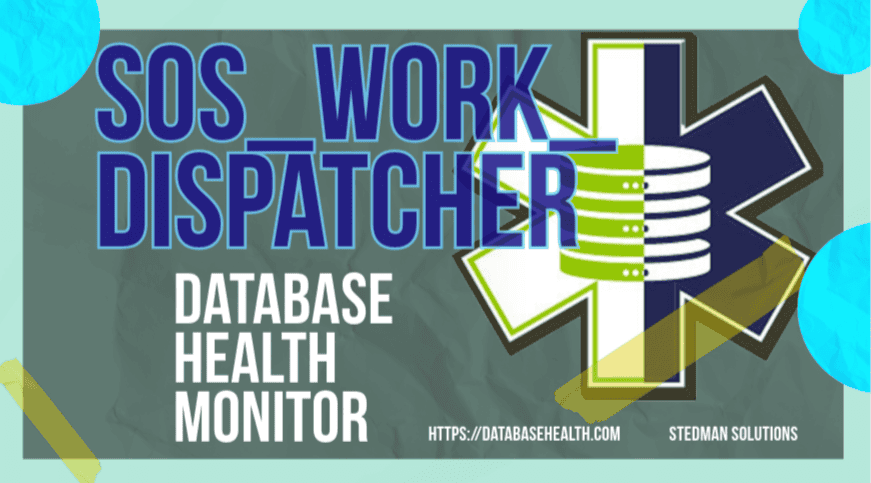Understanding the SOS_WORK_DISPATCHER Wait Type in SQL Server.
In SQL Server, the SOS_WORK_DISPATCHER wait type indicates a delay in dispatching a worker thread to process a specific workload. This wait typically arises when the SQL Server thread scheduler is busy, signaling potential contention in handling tasks. It is less common than other wait types, but when encountered, it may point to underlying issues with the server’s resource management or thread distribution.
The SOS_WORK_DISPATCHER wait type often reflects stress on the internal thread pool, usually due to high CPU utilization, an overwhelming number of simultaneous tasks, or resource bottlenecks. Understanding why this wait type appears is crucial for identifying inefficiencies in how SQL Server processes workloads. Tasks may be queued while waiting for a worker thread to become available, potentially impacting query performance and response times.
Diagnosing SOS_WORK_DISPATCHER Waits
When diagnosing SOS_WORK_DISPATCHER waits, it’s essential to monitor the workload and resource usage on the server. Examining the number of active requests and worker threads can help you determine whether the system is under heavy load or constrained by specific resource limitations. Tools like Database Health Monitor are particularly helpful for tracking wait stats, including the elusive SOS_WORK_DISPATCHER wait type, giving you a clear picture of how your server handles various workloads.
Database Health Monitor makes it easy to identify patterns and trends related to SOS_WORK_DISPATCHER waits over time. By using this tool, you can pinpoint periods of high contention and determine whether configuration changes, query optimizations, or hardware upgrades are needed to reduce these waits. For instance, if worker threads are consistently queued, you might consider scaling your server or optimizing queries to reduce resource demands.
Optimizing Performance and Reducing SOS_WORK_DISPATCHER Waits
Addressing SOS_WORK_DISPATCHER waits starts with analyzing the server’s configuration and workload. A common culprit is insufficient worker threads, particularly in systems experiencing high levels of concurrency. By tuning your server settings or rebalancing workloads, you can alleviate pressure on the thread scheduler. Query tuning and indexing strategies can also minimize resource contention and improve overall throughput, reducing the likelihood of encountering SOS_WORK_DISPATCHER waits.
If you’re struggling to track wait stats and determine the root cause of performance bottlenecks, consider using Database Health Monitor. This powerful tool provides an intuitive interface for identifying wait types like SOS_WORK_DISPATCHER, helping you focus on the most critical areas of your server’s performance. With its historical reporting and real-time insights, you can tackle bottlenecks head-on and ensure smoother operation of your SQL Server instance.
Why Database Health Monitor is Your Go-To Solution

Tracking SOS_WORK_DISPATCHER waits manually can be challenging, especially in complex environments with heavy workloads. Database Health Monitor simplifies this process by presenting detailed insights into wait stats, including the elusive SOS_WORK_DISPATCHER wait type. It not only helps you diagnose performance issues but also provides actionable recommendations to optimize your server’s performance.
Whether you’re facing SOS_WORK_DISPATCHER waits or other wait types affecting your SQL Server, Database Health Monitor is the tool you need to stay on top of your server’s health. Download it today to gain better visibility into your wait stats and take control of your SQL Server performance. Don’t let waits like SOS_WORK_DISPATCHER slow you down—empower your troubleshooting process with the right tools and insights.
More from Stedman Solutions:

Steve and the team at Stedman Solutions are here for all your SQL Server needs.
Contact us today for your free 30 minute consultation..
We are ready to help!
